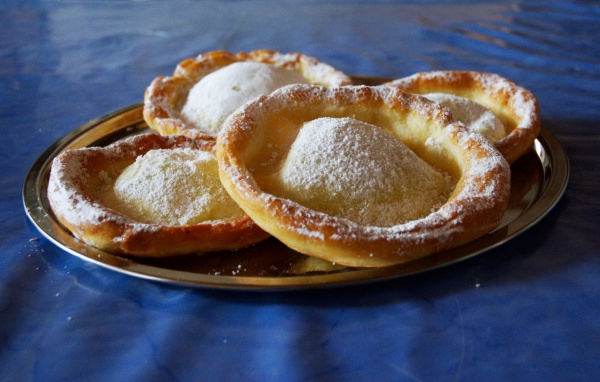Facts About Knieküchle
Knieküchle is a cherished traditional German fried dough pastry popular in regions such as Old Bavaria, Franconia, Western Austria, South Tyrol, and Thuringia. Depending on your location, you might encounter it under various names like Auszogne, Krapfen, Küchl, Nudel, or Rottnudel. In Austria, it is often referred to as Bauernkrapfen or Kiachl.
The foundation of Knieküchle is a yeast dough, occasionally enhanced with raisins for added flavor. When shaping the dough, it is rolled to be thinner in the center and thicker around the edges. It is then fried in lard and sprinkled with confectioner's sugar. In Austria and South Tyrol, it is typically served with apricot marmalade, lingonberry jam, or even sauerkraut.
Traditionally, Knieküchle was enjoyed during harvest times and special occasions like Kermesse or Dult festivals. In Franconia, there is even a playful distinction between "Catholic" and "Protestant" Knieküchle, based on whether or not they are dusted with confectioner's sugar.
A charming legend surrounds the name Knieküchle. It is said that in Franconia, baker women would stretch the dough so thin over their knees that they could read love letters through it. Whether this is true or not, it certainly adds a touch of romance to this delightful pastry!

 Switzerland
Switzerland